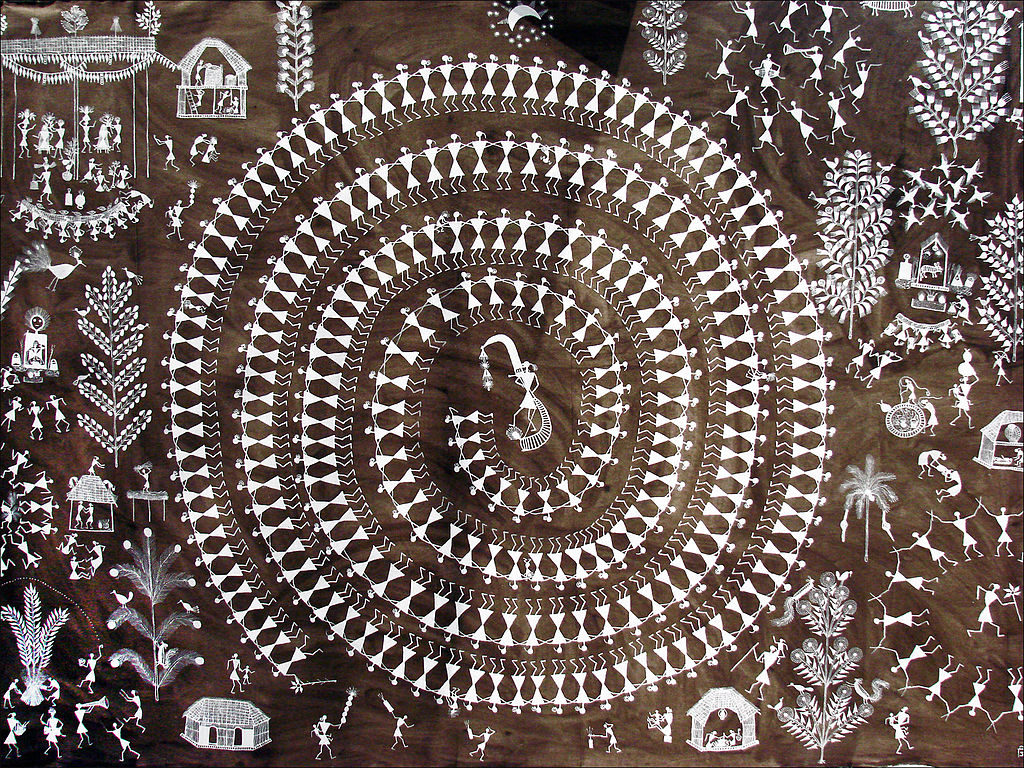I wouldn't say they are on the verge of extinction at all. In fact they are being revived and are sought after by customers from the world over. There are many forums for folk arts to be be showcased and the products are being made available to customers from around the world.
"I am free of all prejudice. I hate everyone equally."
- W. C. Fields :)
Yes i agree with Kalyani... folk arts are being promoted in a big way. Though not the same as before. The best example would be the tradional hand painting designs being revived through Saris. Same goes warli art patterns like in the pic you shared. I see a lot being revived through textiles and also through home decors.
Life is really simple, but we insist on making it complicated - Confucius
Divya wrote:Yes i agree with Kalyani... folk arts are being promoted in a big way. Though not the same as before. The best example would be the tradional hand painting designs being revived through Saris. Same goes warli art patterns like in the pic you shared. I see a lot being revived through textiles and also through home decors.
There is actually a difference between past and present times. Earlier, these folk arts were an integral part of life of the respective tribal folks and were looked upon as casually as the food we eat. Creating an embroidered dress or painting a dupatta, or painting a wall in Warli art etc. was looked upon as their every-day chore. But as later generations got education and moved out to other professions, the numbers of people who could create these things dwindled and so efforts were undertaken to teach and p[ass on these arts to others. If you go to buy a kalamkari dupatta or dress material, you would find it very highly priced in comparison to a printed textile material. How much of this money goes to the artisans who actually create these things is a big question, but the demand for them is indeed picking up now.
"I am free of all prejudice. I hate everyone equally."
- W. C. Fields :)
I don't know about other Folk Art forms, but Kalankari Artists, of AP, owing to lack of support from the Government, the Artisans are taking to other Jobs like Construction Laborers for their lively hood. Some of these Art forms, in order to be produced in a large scale, middle men and Business people are using Mechanical devices, instead of manual painting, And this is another reason for the original Kalankari Artists migrating to urban areas to earn a livelihood. I heard " Pata Chitra" of Orissa too met with the same fate as that of Kalankari.
Rmbabu, that is happening not with kalamkari but other art forms as well trades such as carpentry, pottery etc. No one wants to do any such jobs which requires lot of patience, skill and hard work.
"I am free of all prejudice. I hate everyone equally."
- W. C. Fields :)
True kalyani. Because I had seen How Kalankari Artists in Sri Kalahasti especially aged Artisans who cannot migrate to nearby place for a livelihood are starving and suffering. I lived in Orissa and seen how Pata Chitra Artists are suffering.
Unless the respective State Governments or the center take initiative, to preserve these Art forms they will die sooner than later.
rambabu wrote:True kalyani. Because I had seen How Kalankari Artists in Sri Kalahasti especially aged Artisans who cannot migrate to nearby place for a livelihood are starving and suffering. I lived in Orissa and seen how Pata Chitra Artists are suffering.
Unless the respective State Governments or the center take initiative, to preserve these Art forms they will die sooner than later.
It is story of most of artists in India.
anil wrote:rambabu wrote:True kalyani. Because I had seen How Kalankari Artists in Sri Kalahasti especially aged Artisans who cannot migrate to nearby place for a livelihood are starving and suffering. I lived in Orissa and seen how Pata Chitra Artists are suffering.
Unless the respective State Governments or the center take initiative, to preserve these Art forms they will die sooner than later.
It is story of most of artists in India.
The Government washes its hands off, after rewarding them Awards. Pata Chitra, a very rare and skillful painting on Canvas is a very popular Art form of Odisha. When I was working in Rourkela Steel plant in Odisha, As a Visualiser working in PR department, I interviewed them for the publication in the In House magazine. During that time I could know the skill in their art as well as their woes due to lack of support from the State Government.
Kalyani Nandurkar wrote:Divya wrote:Yes i agree with Kalyani... folk arts are being promoted in a big way. Though not the same as before. The best example would be the tradional hand painting designs being revived through Saris. Same goes warli art patterns like in the pic you shared. I see a lot being revived through textiles and also through home decors.
There is actually a difference between past and present times. Earlier, these folk arts were an integral part of life of the respective tribal folks and were looked upon as casually as the food we eat. Creating an embroidered dress or painting a dupatta, or painting a wall in Warli art etc. was looked upon as their every-day chore. But as later generations got education and moved out to other professions, the numbers of people who could create these things dwindled and so efforts were undertaken to teach and p[ass on these arts to others. If you go to buy a kalamkari dupatta or dress material, you would find it very highly priced in comparison to a printed textile material. How much of this money goes to the artisans who actually create these things is a big question, but the demand for them is indeed picking up now.
I agree they are highly priced, recently I picked up a kalmkari printed cotton blouse piece which cost 300 rupees..they are beautiful no doubt and as long as the artists benefit, it's okay
Pay no mind to those who talk behind your back, it simply means that you are two steps ahead !!!
Real Kalankari paintings are ,done manually. The Artisans make their own colors and brushes. This is the reason why they are costly. The Artisan draws each curve and line manually with the Brushes made by him. Above all a Small painting takes lot of time.
Page 1 of 2





